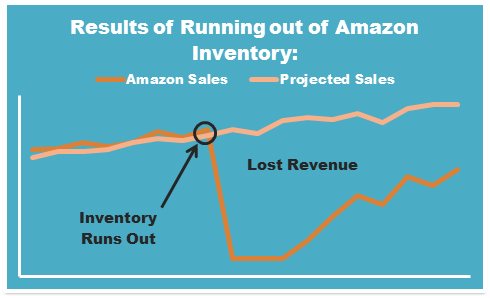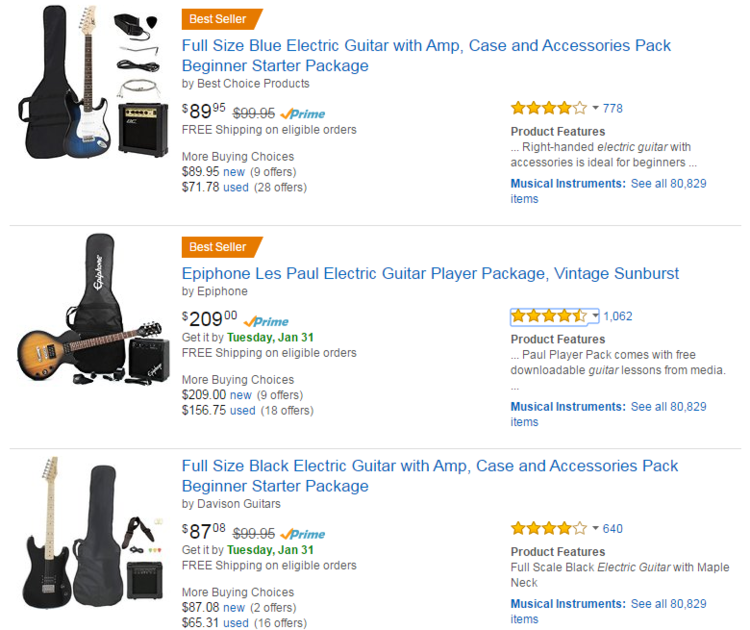Amazon Prime Day has become one of the biggest events on the e-commerce shopping calendar, and at Bobsled we’re predicting Prime Day 2018 will leave past years trailing in its dust.
Prime Day is a global event that will be held sometime around mid-July where thousands of short-term deals will go live on various Amazon marketplaces. Sellers and Vendors are contacted by Amazon in the lead up to Prime Day and are asked to submit for various Prime Day deals (the first deadline is tomorrow, Friday May 18th, more on deadlines below). In order to access the deals, shoppers need to become Amazon Prime members.
Find our recap of Prime Day 2017 here.
 Image Source: Amazon.com
Image Source: Amazon.com
Amazon capitalizes on the event by gaining more Prime subscriptions and an untold amount of publicity. Sellers and Vendors have the opportunity to capitalize by selling through a lot of inventory and acquiring new customers in the often patchy summer selling season.
Since its inception, Prime Day has been criticized by brands and customers alike for three main reasons:
- Duration of deals. In past years, customers have logged on to Amazon on Prime Day and found an attractive deal, only for all units to be sold in a matter of seconds, leaving thousands of disappointed customers.
- Lack of value-for-money. In 2017, Amazon suffered some social media backlash in the aftermath of Prime Day from customers who felt the hype of the economic holiday outweighed the actual quality of deals on offer.
- Technical Glitches. Last year a technical glitch on Amazon’s end apparently caused several sellers’ Lightning Deals in North America to be “suppressed” and ultimately “cancelled,” causing them to lose potentially large amounts of money in pre-paid fees and over-stocked inventory.
In 2018, we predict Amazon will address the above concerns in a couple of ways.
Last year, Amazon started spacing deals out around the week leading up to Prime Day. We suspect that they will take things a step further this year with deals start popping up on Amazon in the weeks leading up to Prime Day, giving shoppers plenty of time and opportunity to snag a bargain, increasing overall customer engagement. Rather than a single day or week, think of it more as Prime-Month.
 Image Source: Amazon.com
Image Source: Amazon.com
Secondly, Amazon will undoubtedly be using it’s wealth of historical sales data to ascertain the right price-point and inventory levels for the 2018 Prime Day deals. Amazon uses the event as a tool to get more Prime subscribers, who according to research will spend twice as much on Amazon over the long-term as non-Prime users. However, the trade-off is that Amazon has to provide real value-for-money deals (that actually function as advertised), otherwise the occasion comes off as a PR stunt for it’s Prime service.
As a full channel management agency, we provide our clients with Amazon support across four key service areas: Operations, Customer Service & Brand Protection, Organic Marketing and Paid Advertising. We’ve developed a Prime Day 2018 playbook across each service area in order to help our clients win big on this hugely important day.
OPERATIONS
Deal Deadlines
In order to participate in a Prime Day deal, the first step is submitting an expression of interest. Here are the various deadlines:
- May 18th – Deadline for Third Party (Seller Central) Sellers to submit for Amazon Prime Day Lightning Deals.
- May 31st – Deadline for Vendors (Vendor Central) to submit for Amazon Prime Day Lightning Deals, Spotlight Deals, Coupons, & Category Deals.
- June 15th – Deadline for Vendors to submit category page merchandising & marketing packages.
The above deadlines may vary based on the Amazon marketplace.
All the different types of deals function in essentially the same way. Amazon asks Vendors and Sellers to provide short-term product discounts that are predetermined by Amazon in exchange for increased visibility and exposure on the marketplace. There is also an obligation to assign a certain number of Prime-eligible units to the deal. Even if a brand agrees to Amazon’s proposed discount and inventory levels there’s no guarantee Amazon will approve the deal, and there is also no guarantee Amazon will actually run approved deals on Prime Day.
In order to figure out the right type of deal, a brand should have an intimate understanding of the profit margin of each SKU sold on the Amazon marketplace. Prime Day is ultimately a pay-to-play experience, and every Seller and Vendor should make an informed decision about how to reconcile profit margin with increased exposure.
Inventory Planning
Perhaps the biggest consideration for sellers and vendors in the lead-up to Prime Day is inventory planning.
In order to qualify for Prime Day deals a brand may have to manufacture more inventory than what’s historically anticipated and ship this inventory to Amazon’s DC’s (Distribution Centers) on a very short turnaround.
Existing levels of inventory will also inform which Prime Day deal to go for. For example, if a brand is planning to eventually discontinue an item, it may make sense to utilize a Lightning Deal to sell through remaining inventory very quickly. In this situation a brand might take a hit on profit margin, however by selling remaining inventory rapidly they may be avoiding future long-term storage fees.
In addition, it’s extremely important for brands to think about the type of impact Prime Day might have on their entire Amazon catalog. A successful Prime Day typically may result in a huge spike in traffic and conversion, which in turn boosts the BSR (Best Seller Rank) for impacted products. This means that in the aftermath of the event the demand for certain SKUs may be heightened, and therefore you need to ensure you have adequate inventory to capitalize on this surge of interest.
We discuss this ‘halo effect’ in Episode 1 of Bobsled’s Ecommerce Braintrust podcast.

For Sellers this may mean sending in additional FBA inventory, and strategically reserving units that you can decide when to bring back online. If sending more FBA inventory to Amazon is not an option, having the capacity to Merchant-fulfil orders is the next best solution.
Here is more information about Bobsled’s recommended inventory management strategies.
Vendors are a little more constrained as their inventory levels are controlled by Amazon’s Purchase Orders. However, if a vendor is anticipating a serious inventory crunch in the aftermath of Prime Day, it may be worthwhile investigating the possibility of pursuing a hybrid model (operating a Vendor and Seller account simultaneously). By selling in a hybrid capacity, a brand can ensure that even if all Vendor inventory is sold out, customers will still able to find and order Prime-eligible inventory.
Impeccable Account Admin on Prime Day
As experienced Sellers and Vendors know all too well, technical issues can seriously hinder progress, especially on high-stakes occasions like Prime Day. Such problems include product listing pages appearing incorrectly, credit card payment failures and stranded inventory.
Failure to fix such problems in a timely manner on Prime Day can result in thousands of dollars of lost revenue. Therefore it's critical brands allocate resources to ensure everything is running smoothly.
We recommend triple-checking all the crucial moving parts at the start of Prime Day, and revisiting the account every hour to ensure everything is running according to plan.
CUSTOMER SERVICE & BRAND PROTECTION
Post-Purchase Email Sequence
A huge advantage of Prime Day is that your brand and product has the opportunity to get in front of thousands of new eyeballs. Making a lot of one-time sales is great, but turning new Prime Day customers into long-term supporters of your brand is even better.
With this goal in mind, Sellers should be looking at their post-purchase email sequence. At Bobsled we recommend a post-purchase email sequence that satisfies three criteria:
- avoids negative product feedback
- promotes positive product feedback
- adds extra value for each customer
By implementing such an email sequence Sellers will be doing everything to ensure quality customer service experience for all Prime Day customers. This should result in more product reviews, which will help build your catalog’s BSR.
Prepare For A Higher Volume Of Customer Service Inquiries
For Sellers, more orders generally means more direct interaction with customers. A customer who finds your product on Prime Day is probably ecstatic about the deal and potentially has some follow-up questions, hence a higher volume of inquiries is to be expected. The last thing you want as the Seller is for the customer to be left in the dark if there’s been some type of issues with their order. Poor customer service on and around Prime Day could have lasting ramifications for your brand.
The solution is simple; Sellers should ensure adequate customer service resources are dedicated to their account in order to preserve perfect account metrics.
Vendors, on the other hand do not have any ability to interact directly with customers as this is something Amazon handles on their behalf.
Another thing both Vendors and Sellers should be watching during this critical period is product reviews. Negative product reviews are often the result of a simple misunderstanding regarding how to use a product or perhaps an issue with the shipping carrier. It’s important for brands to respond directly to any negative product reviews in order to try and find a solution for that particular customer, and also allay similar concerns for any potential future customers.
Monitor The Presence Of Unauthorized Third-Party Sellers
Unauthorized third-party sellers are a huge problem for both Vendors and Sellers on the Amazon marketplace. These sellers compete for the Buy Box on product listings, and could be making a serious dent on your gross Amazon revenues.
During a period like Prime Day, traffic on Amazon will spike, and this surge of customers will be trying to find the absolute best deal for every product on their wish list. If an unauthorized third-party seller is undercutting you on price, or you’re faced with a stock-out, this seller may win the Buy Box and reap the rewards.
Unauthorized sellers don’t merely impact products that are getting boosted with Prime Day deals. A customer may find your product through a deal on Prime Day, and then decide to review your entire product catalog. Therefore a comprehensive brand management approach is recommended.
You can read more about Bobsled’s best practices in respect to Amazon brand management here.
Organic Marketing
Are Your Product Listings Designed To Convert?
A Prime Day deal is designed to generate a huge quantity of clicks, but that’s only half the battle. Ensuring your product listings are optimized for conversion will allow you to reap the full benefits of the Prime Day buying frenzy.
The first step is starting with the framework of the product listing; back-end search terms and metadata, product title, images, bullet points and product description. In the lead up to Prime Day it’s worthwhile to check the traffic and conversion percentage across the catalog to ascertain which listings may require a tune-up.
Secondly, Sellers and Vendors should be considering boosting the quality of the product listings with EBC (Enhanced Brand Content) and A+ Pages. These enhancement features offer a great way to differentiate your products from competitor offerings.
Summarized, Sellers and Vendors need to ensure their product listings are designed to turn browsing bargain-hunters into buyers on high-reward occasions such as Prime Day.

DIY Prime Day Deals
As mentioned earlier, in order to qualify for Amazon’s official Prime Day deals, a brand needs to accept Amazon’s non-negotiable discount demands and inventory prerequisites. For whatever reason, the nature of the deals are simply not going to work for many Vendors and Sellers.
The reality is that due to the huge amount of PR Amazon will be doing there is going to be a lot more traffic on Amazon during Prime Day. And once a user is on the site, there’s nothing stopping them from finding your products, even if you aren’t running an approved Prime Day deal.
Therefore, brands should be considering ways in which they can manipulate their product listings to provide more value for money for the Prime Day customer. Simple ways to do this include Percentage Off, Free Shipping (if you always Merchant-fulfill) and Buy One Get One promotions. If you want to get more advanced, Product Bundles and the Subscribe & Save program might be ways in which you could edge out your competitors, even if they are running official Prime Day deals.
We’ve published a blog post on Amazon Promotions, you can check it out here.
Prime Day 2018 presents an opportunity for every brand selling on Amazon. If you’re interested in learning more about how Bobsled could ensure your brand is ready for a successful Prime Day you can set up a consultation here.
Using Other Channels To Promote Your Prime Day Deals
Every brand has a different perspective on how they view their Amazon channel, but some Vendors and Sellers are in the fortunate position of being able to send qualified existing traffic to their Prime Day deals.
If you are a brand manager in this position, we’d strongly recommend scheduling email blasts and social media posts for Prime Day, alerting existing customers to your deals. There is going to be a lot of noise on the day, therefore it’s crucial you can reach your existing customer base with your offer before a competitor beats you to the punch.
PAID ADVERTISING
Test And Analyze Your PPC Performance In The Lead-Up To Prime Day
Whether you are planning to run sanctioned deals, or whether you simply want to capitalize on the event by manipulating product listings on your own terms, the performance of your PPC campaigns will make a big impact on your Prime Day results.
In the lead-up to the event it’s important to closely review your AMS and/or Sponsored Products campaigns in order to gauge performance. Looking for opportunities to add any missing negative keywords and closely reviewing the bid amount and daily budgets for all campaigns can be hugely advantageous, as it will allow you to take stock and establish a baseline.
The existing PPC data contained within your account is hugely informative and will inform how to approach Prime Day from a paid advertising perspective.

Carefully Monitor PPC Performance In The Lead Up & On The Day
Every brand’s Amazon presence differs wildly, therefore it’s impossible to develop a one-size-fits-all approach when it comes to Prime Day paid advertising.
In 2018, we’re expecting more total marketplace traffic in the lead up to Prime Day, and as a result it’s important to monitor PPC performance closely in order to capitalize.
In 2017, we noticed a 46% average increase in spend on Prime Day across our clients’ campaigns compared with the average spend from the first 10 days in July, however it was not uncommon for some of our clients’ daily budgets to be spent within just a few hours. Curiously, on average, CPC (Cost-Per-Click) only increased 2.72% on Prime Day, as compared to the days leading up to the event. Just 1 out of 3 clients saw an increase in CPC of more than 50% on Prime Day, versus the period of July 1-10.
Stefan Jordev, PPC Manager at Bobsled, has compiled his main Prime Day takeaways:
- Check your account every few hours. Campaigns run out of budget very quickly.
- Get ready with bids and budgets before Prime Day.
- CPC rates do not necessarily increase during Prime Day.
- Every single account saw increased sales on Prime Day.
If you’re interested in learning more, we have more Prime Day PPC analysis here.
Good Luck!
.png)

